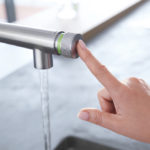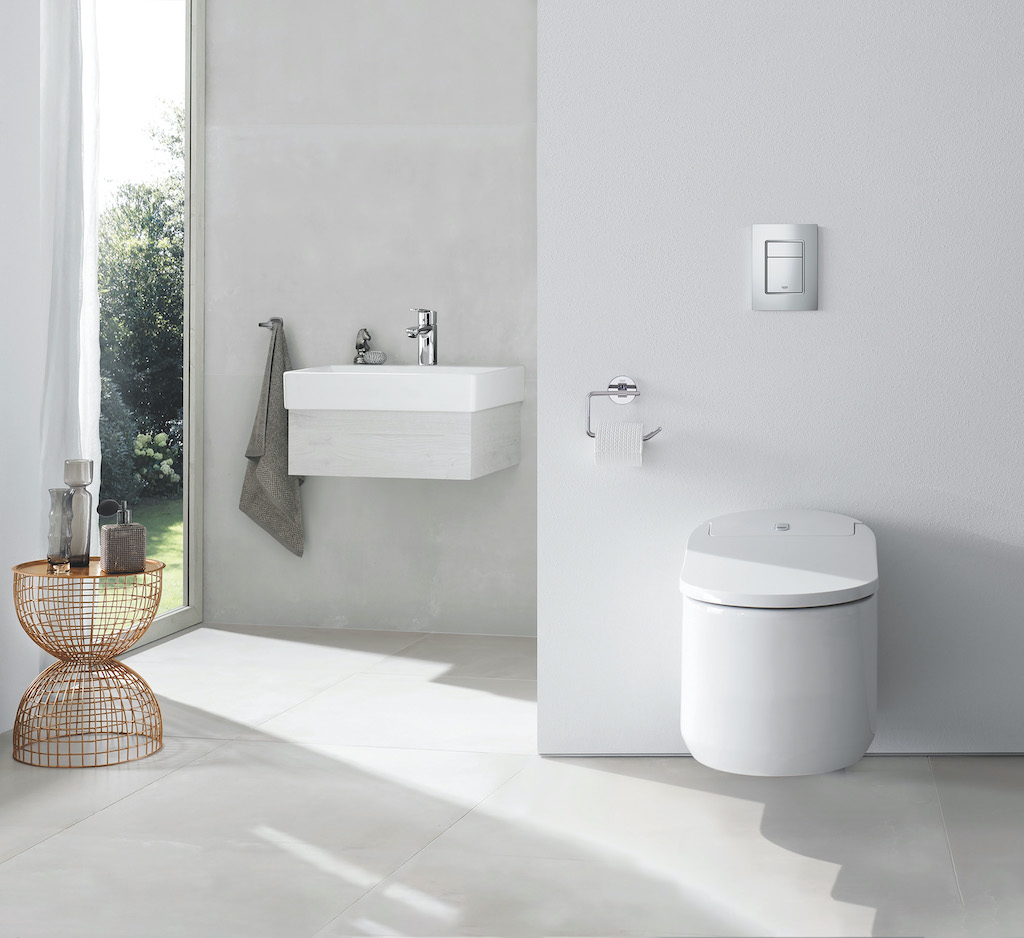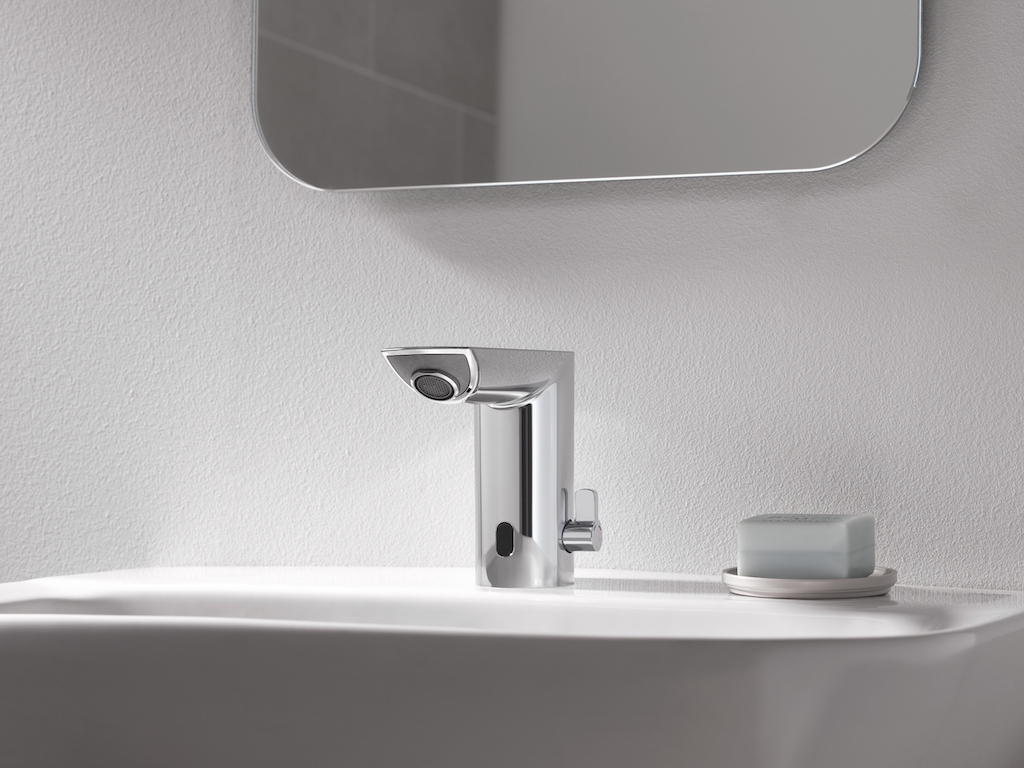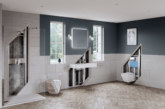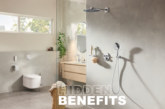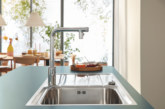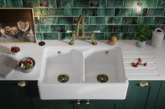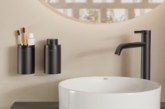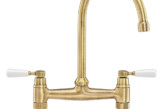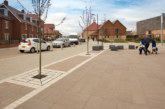 With the country focussed on a global pandemic, hygiene has shot to the top of luxury housebuilders’ priorities. Here, Elina Enqvist-Twomey, Category Manager at Grohe, takes a look at how you can improve home hygiene in style.
With the country focussed on a global pandemic, hygiene has shot to the top of luxury housebuilders’ priorities. Here, Elina Enqvist-Twomey, Category Manager at Grohe, takes a look at how you can improve home hygiene in style.
While products that optimise hygiene have been commonplace in the commercial sector for some time, leading global kitchen and bathroom supplier Grohe has reported an unprecedented consumer demand for these products in the wake of the coronavirus crisis. At a time when the pandemic has pushed the everyday necessity of hand washing into the spotlight and an ongoing level of uncertainty as to how long Covid-19 will pose a threat remains, it is not surprising that homeowners are seeking to invest in solutions to optimise hygiene and gain some reassurance in their everyday lives. While hygiene has jumped the ranks in terms of priority for buyers over recent months, it is likely to have longevity and a long-lasting impact on the residential property market. Housebuilders that can offer and advise on standard or upsell options that optimise hygiene in the home will therefore build trust with prospective buyers.
Infra-red taps
In recent years, the property market has seen a shift to include more alternative housing set ups such as grandparents living with their children and families, or groups of young professionals co-habiting together. This is when infra-red technology first began to be demanded in the residential sector and its benefits have continued to strengthen demand ever since. Infra-red taps require minimal, if any, human contact with the tap itself unlike standard taps where germs from unclean hands could linger on tap handles, unless continual and thorough cleaning was carried out after each use. These products are therefore the perfect option for a residential project designed, built and specified with hygiene as a priority.
Other benefits of some more innovative infra-red taps include pre-set programmes that ensure temperature is optimised for both safety and hygiene, ease-of-use for older generations and those with limited mobility thanks to touch-free operation, and reduced water consumption, which is another rising trend amongst prospective buyers. Products like the Bau Cosmopolitan E infrared-tap from Grohe ensure water only flows when it is being used and even have an additional water saving aerator that limits water consumption to 5.7l/min, reducing water consumption by up to 70% without compromising on convenience or design.
Shower toilets
Shower toilets are beginning to be more understood by the mass market and homeowners are starting to understand their multi-faceted nature and the value of the benefits they can offer. Cleaning with water after using the toilet is an age-old tradition that is still favoured in many parts of the world, however shower toilets brings this natural form of cleansing into the technology, and more recently, hygiene-focused 21st century – using automation and app-connectivity to create a hands-free experience.
Product innovations at the forefront of this category are equipped with automatic flush functionality and precise motion sensors which prompt the lid to automatically open upon approaching and close when you leave. A personalised cleansing experience can also be made possible via a smartphone app or remote control. Users can select their preferred temperature, spray pattern, pressure and much more, and even save their preferred settings as a profile. All members of the household and guests are therefore able to experience a spa-like toilet experience without ever having to touch anything with their hands – significantly helping to reduce the potential spread of germs and viruses around the home.
Hands-free kitchen taps
The kitchen is arguably the most frequented area of the home and incorporating hygiene into this space is a great way to draw in prospective buyers. Standard kitchen mixer taps are evolving – many models are doing away with the kitchen lever and opting for alternative modes of operation that reduce the need for direct contact with the tap’s surface.
One of the latest ways of thinking is to replace the tap lever with a button at the end of the spout that can easily be pushed with the wrist, forearm or elbow to activate water flow. Our SmartControl kitchen tap features this new mechanism, a concept lent from similar technology used in our shower systems. Not only does this method prevent the risk of cross-contamination from daily touch and usage but also when preparing food, especially raw produce. Whilst the temperature of the water can be regulated using a mixing valve on the body of the tap, smart technology has been employed enabling the tap to remember and automatically save the preferred settings, meaning that the volume and temperature levels will stay as desired until it is changed again, and furthers the hygienic principles of the tap’s design.
Health and hygiene are set to play a key role in defining the way homes are designed in the coming years and product designs that use advanced technologies to meet this demand will likely continue to skyrocket in popularity and eventually become a staple of the modern build.

